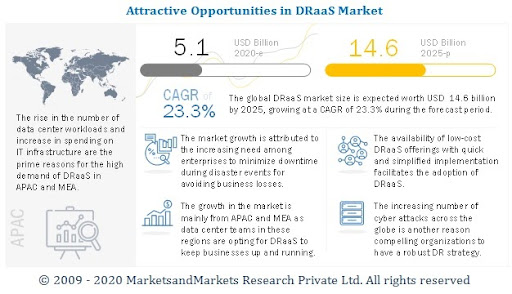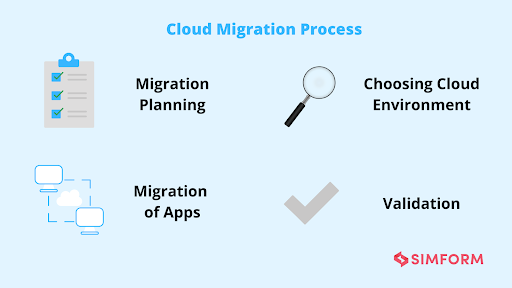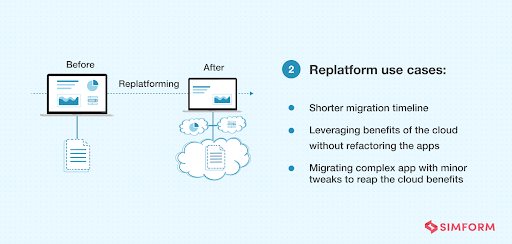Replatform For Your Cloud Migration: Is it the Best Strategy?
Cloud migration is accelerating every day but every application you migrate is not configured for a cloud environment, that's where re-platform strategy comes into play.
Join the DZone community and get the full member experience.
Join For FreeCloud migrations have picked up more pace due to the recent pandemic. Yet, every application you migrate is not configured for a cloud environment, where platform strategy comes into play.
Take an example of Evernote that leveraged re-platform (lift, tinker, and shift) strategy for their cloud migration. The note-taking application needed an infrastructure solution to scale according to user traffic with speed, reliability, and disaster recovery. However, it was challenging to ensure disaster recovery during the migration of all the assets in a single attempt.
So, they leveraged a phased approach with testing and iterating gradually to migrate their application to a cloud environment. As a result, Evernote migrated 5 billion notes and attachments to the Google Cloud Platform in 70 days.

The disaster recovery as a service(DRaaS) market will reach $14.5 billion by 2025, growing at a compound annual growth rate of 23.3%. The market is fueled by massive spending by organizations on solutions for disaster recovery.
So, rather than spending heavily on such solutions, why not use a strategy that can help tweak your applications and test them before migrating?
What is Cloud Migration?
Cloud migration is a process to move your applications, database, and other IT assets to the cloud environment. It may seem easy on paper, but the execution needs a reliable strategy as you will be shooting in the dark without a well-planned cloud migration strategy. Creating a roadmap for your cloud migration will help save costs and enable the secure data transition from your legacy systems to cloud environments.

A cloud migration process involves:
Migration planning
Choosing the right cloud environment
Moving data and applications
Validating the move and success of the migration
Migration Planning - It involves pre-migration assessments, migration process planning, evaluating the pre-requisites, and others.
Choosing the right cloud environment- The process includes assessing business-specific needs, comparing different cloud-based solutions, and then deciding which one suits your cloud migration goals.
Moving data and applications- Once your cloud migration strategy is ready, execute it and move the application accordingly.
Validating the move and success of the migration- Conduct a post-migration assessment of the application based on pre-defined KPIs to validate the move and measure the ROI.
Let’s discuss the cloud migration strategy and understand its effectiveness for your business.
Replatform Strategy: Is It Worth It?
Re-platform strategy is a modified version of rehosting that enables you to make few configurational changes to the applications to make them compatible with the cloud environment.
There are no changes to the core architecture of the applications with minor tweaks to some of its components for suitability with the cloud-native environment. In addition, it helps in changing the way your apps interact with databases so that you can leverage managed platforms like Google CloudSQL or Amazon RDS.

Take an example of Pinterest that migrated more than 1000 microservices using AWS. Pinterest Leveraged a re-platform strategy and migrated to a system that uses Docker containers orchestrated through Kubernetes. As a result, cloud migration helped Pinterest engineers reduce the running time of instances and save resource costs.
Best Use Cases of Re-platform Strategy
You need minor tweaks in your app code without hindering the functionality.
You want to benefit from other cloud services rather than just migrating the assets.
You have compatibility issues with some components of your application for migration to the cloud environment.
You need simplification of the complex code of your applications that will be migrated to the cloud.
You want to automate essential functions of the application on the priority and not the business part.
Top Benefits of Re-platform Strategy
Allows you to benefit from cloud resources without changing the core architecture of your applications.
Reduced costs in the long term due to no need for massive changes in the architecture
Re-platform offers the flexibility of starting small and later scaling as per need.
Enables you to leverage cloud-native capabilities like auto-scaling, managed storage and data processing services, and Infrastructure as Code (IaC) for your application.
Can make changes in the same programming language or environment used in on-premise infrastructure.
Conclusion
Cloud computing space has evolved, and migration towards it has increased over the years. However, rushing your cloud migration may not serve the purpose for which you are spending a fortune.
So, it is essential to strategize your cloud migration for optimal performance and cost-effective operations. Choosing a strategy like re-platform may be subjective to your business needs but does offer practical benefits over others.
Opinions expressed by DZone contributors are their own.

Comments